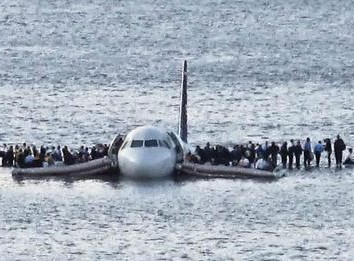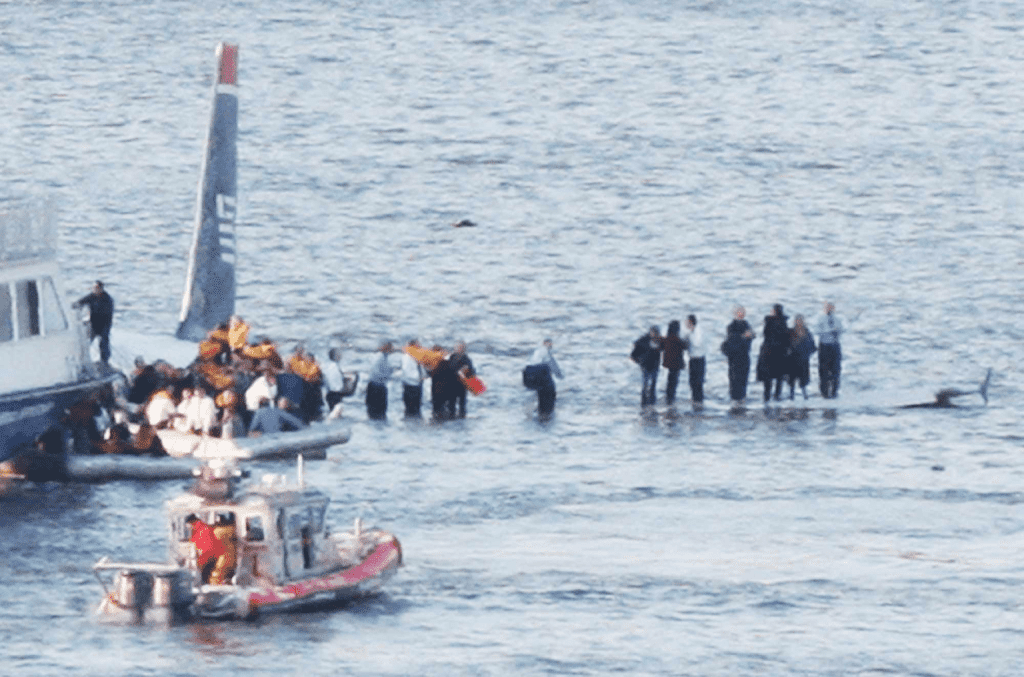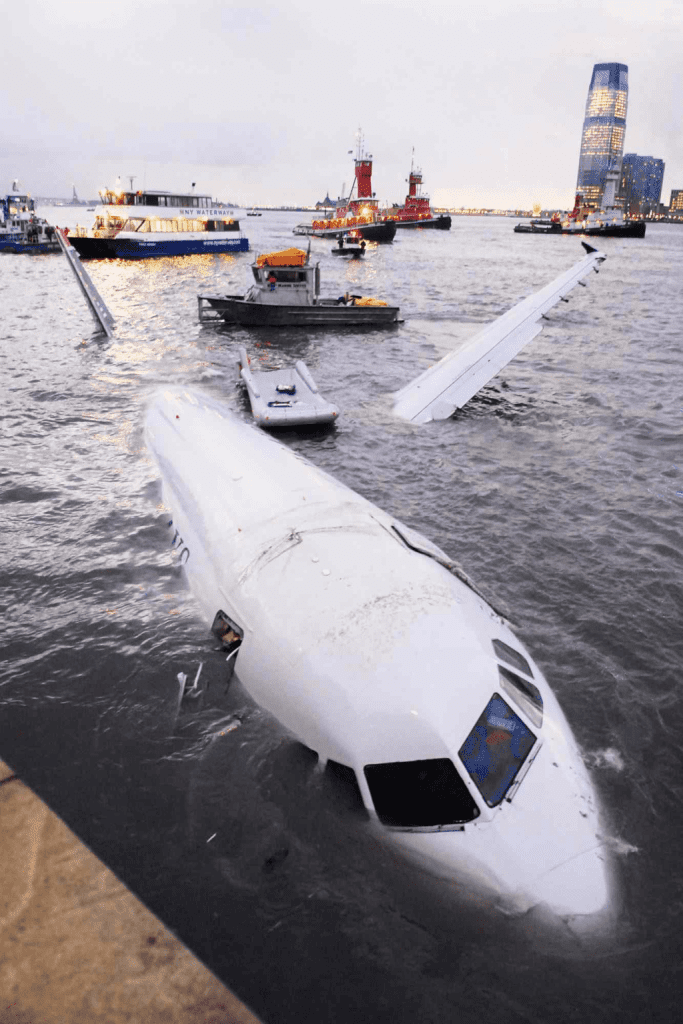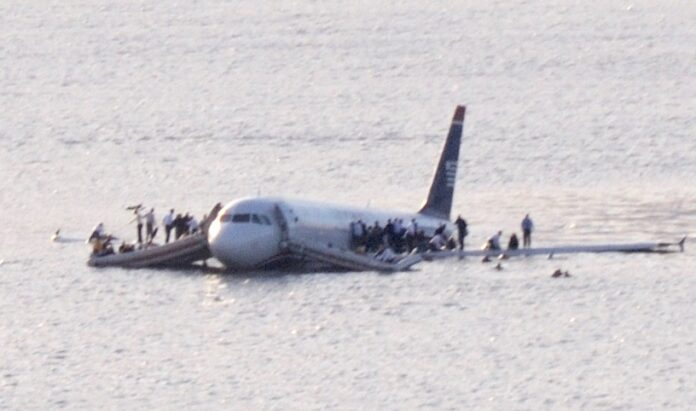It has been ten years since the extraordinary events of January 15, 2009, when Captain Chesley “Sully” Sullenberger performed one of the most remarkable feats in aviation history. Known as the “Miracle on the Hudson,” this incredible story of skill, composure, and teamwork captivated the world and has remained an enduring symbol of courage and professionalism.
Even a decade later, the cockpit audio from US Airways Flight 1549 still sends shivers down the spine. Listening to the calm yet decisive words of Captain Sully as he navigates an unprecedented crisis is a reminder of the gravity of that moment and the heroism displayed by everyone involved.

The Day That Changed Aviation History
On the crisp afternoon of January 15, 2009, US Airways Flight 1549 departed from LaGuardia Airport in New York City, bound for Charlotte, North Carolina. Just minutes into the flight, disaster struck when the Airbus A320 collided with a flock of Canadian geese, causing both engines to lose thrust. With no power and precious little time, Captain Sullenberger and First Officer Jeffrey Skiles faced a dire situation.
Realizing they couldn’t make it back to LaGuardia or reach another nearby airport, Sully made the split-second decision to attempt an emergency water landing on the Hudson River. What followed was a masterclass in composure and quick thinking that saved the lives of all 155 people onboard.
The Chilling Cockpit Audio
The cockpit audio from that day remains as harrowing as it is awe-inspiring. Captain Sully’s calm, measured voice stands in stark contrast to the life-or-death stakes of the situation.
“This is Cactus 1549. Hit birds. We’ve lost thrust in both engines. We’re turning back to LaGuardia,” Sullenberger informed air traffic control. His voice, steady yet urgent, conveyed the gravity of the situation.
Despite being offered alternative landing options, including New Jersey’s Teterboro Airport, Sully calmly assessed the plane’s trajectory and responded, “We can’t do it. We’re gonna be in the Hudson.” These words, spoken with such calm resolve, continue to resonate deeply.
The audio ends ominously as the air traffic controller says, “Cactus 1549, radar contact is lost.” What followed was a 208-second descent that could have ended in catastrophe—but instead became a triumph of human ingenuity and teamwork.

A Successful Water Landing Against All Odds
Executing a water landing is one of the most challenging maneuvers in aviation. Despite these odds, Sully skillfully guided the plane onto the Hudson River with remarkable precision. The aircraft remained intact, floating long enough for all passengers and crew to evacuate safely onto rescue boats. The swift response from New York City’s emergency services, including ferries and helicopters, was instrumental in ensuring everyone’s survival.
Reflecting on the event, Sully later said, “I never thought about my family or anything else. I focused solely on solving the problem—controlling the flight path and ensuring we saved every life.”
The Aftermath: Hailing a Reluctant Hero
Captain Sullenberger emerged as an international hero, earning accolades and respect worldwide. However, Sully himself was initially reluctant to embrace the title.
“I resisted the H word initially,” he admitted in an interview years later. “But I’ve come to understand why people feel the way they do about this event—and about me by extension.”

Sullenberger’s humility and insistence on acknowledging the teamwork involved have only deepened the admiration people feel for him. From First Officer Skiles to the flight attendants and the passengers who remained calm, Sully emphasizes that the Miracle on the Hudson was a collective effort.
Lessons Learned from the Miracle on the Hudson
The Miracle on the Hudson didn’t just save lives—it reshaped aviation safety protocols and public perceptions of what is possible in an emergency. The event highlighted the importance of rigorous pilot training, effective communication, and quick decision-making under pressure.
Sullenberger’s actions also reinforced the critical role of teamwork in crisis situations. From his coordination with Skiles to the passengers and emergency responders who acted swiftly, every piece of the puzzle had to fall perfectly into place for the outcome to be as miraculous as it was.
A Decade of Reflection
Ten years later, Captain Sully remains a symbol of professionalism and composure. At the age of 67, he continues to inspire as an advocate for aviation safety and leadership under pressure. Reflecting on the event, he noted the profound impact it had on him and everyone involved.

“I think about what we did, but also what everyone else did,” Sully said on the tenth anniversary of the landing. “This group of strangers had to rise to the occasion to save every life. It was a powerful moment of unity and determination.”
The Legacy of the Miracle on the Hudson
The Miracle on the Hudson is more than just a story of survival; it’s a testament to the resilience of the human spirit. It reminds us of the power of calm leadership, teamwork, and the ability to make split-second decisions under extraordinary circumstances.
The cockpit audio, which still sends chills down listeners’ spines, serves as a powerful reminder of the professionalism and courage displayed by Captain Sullenberger and his crew. His words—calm, clear, and unwavering—are a blueprint for how to handle adversity.
Conclusion: A Moment That Defined a Generation
The Miracle on the Hudson stands as one of the most incredible feats in aviation history. Captain Sully’s actions saved 155 lives, but they also inspired millions around the world. His ability to remain calm under pressure, coupled with the collective effort of all involved, turned what could have been a tragedy into a story of hope and resilience.
A decade later, we still marvel at the skill and determination it took to accomplish what Sully and his crew did on that fateful day. Their story serves as a beacon of inspiration, reminding us of the extraordinary things humans are capable of when faced with the unimaginable.


